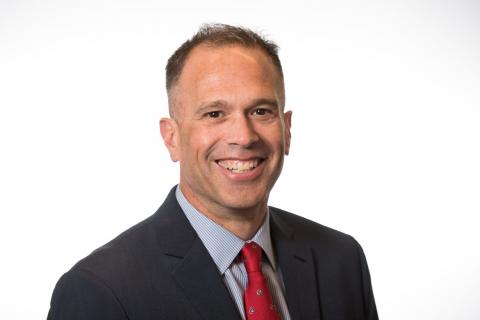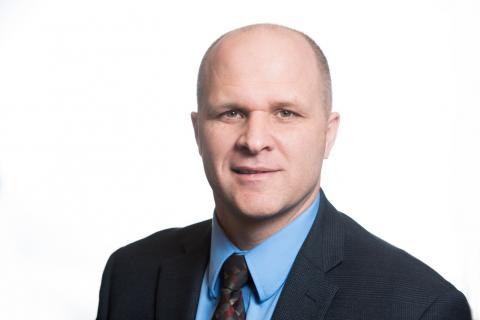The Team

H. Todd Schaef, Chemist; Subsurface Energy Systems, Subsector Manager
Todd Schaef has been a staff member at PNNL for over 27 years and has attained the position of senior research scientist (IV). He is a team leader in the Geochemistry group, subsector manager for the Carbon Management and Fossil Energy Sector's subsurface portfolio, and he has served as principal investigator, co-principal investigator, and project manager on a diverse range of projects funded by the U.S. Department of Energy’s (DOE) Office of Fossil Energy and Carbon Management, Office of Energy Efficiency and Renewable Energy, and Solar Energy Technologies Office. Highlights of his recent work include efforts directed at greenhouse gas emission management, ranging from a field validation project, to establishing research in water-bearing supercritical carbon dioxide (CO2) fluids related to energy extraction technologies, to the deep geological storage of captured CO2.

Mark White, Staff Mechanical Engineer
Mark White has more than 30 years of experience developing and applying world-class multifluid, coupled-process subsurface numerical simulation capabilities for PNNL. This work is recognized nationally and internationally as the STOMP suite of simulators, for which he is the principal developer. This software is currently being used to provide new understanding of subsurface process behavior, with applications in environmental restoration, environmental stewardship, carbon sequestration, conventional and unconventional fossil energy production, and geothermal systems. Most recently, his work has been focused on developing embedded fracture, fault, and borehole modeling capabilities into STOMP.

Quin Miller, Chemist
Quin Miller collaborates with others to probe interfacial processes with PNNL’s high-pressure experimental suite, including in situ X-ray diffraction, infrared spectroscopy, and nuclear magnetic spectroscopy. A chemist, also works on a broader range of projects that include subsurface sensing technology research and development and planned field deployments.

Tim C. Johnson, Computational Geophysicist
Tim Johnson is a computational geophysicist specializing in high-performance time-lapse imaging for subsurface process monitoring. He is the lead developer of the award-winning E4D geophysical modeling and inversion code, which was used to develop and demonstrate the first applications of real-time 4D subsurface imaging using electrical resistivity difference tomography. Since 2015, he has worked extensively to develop and demonstrate autonomous imaging of field scale fluid flow through fractured rock systems in support of geothermal, oil and gas, and national security applications.
Jeff Burghardt, Earth Scientist
Jeff Burghardt has over 10 years of experience in experimental and computational geomechanics. Since joining PNNL in 2016, his work has focused primarily on geologic carbon sequestration and enhanced geothermal systems. Burghardt's experimental work includes both laboratory and field work. His computational work focuses on uncertainty quantification and developing high performance computing applications for coupled poromechanical, porous media flow, and geophysical analyses of complex subsurface processes.

Chris Brown, Earth Scientist
Chris Brown is PNNL's lead for the National Risk Assessment Partnership Program. In this role, he manages and directs the work of ten researchers who are developing the science-based tools needed to assess risk at carbon dioxide storage sites. Throughout his career, he’s managed complex, first-of their-kind field projects, including FutureGen 2.0 and the Basalt CO2 Sequestration Pilot. Since 2015, he’s been using ultra-trace mass spectrometry capabilities to better understand deep subsurface transport of fluids, apportion source terms for subsurface contamination and remediation, and to develop new signatures of human impact on the environment.

Nicolas Huerta, Geologist / Petroleum Engineer
Nicolas Huerta has over 10 years of experience in geologic sciences and petroleum engineering. Since joining PNNL in 2019, his work has focused primarily on geologic carbon storage, with an emphasis on risk assessment. Prior to his employment at PNNL, he was a research scientist at the National Energy Technology Laboratory where he used a combination of laboratory experiments and numerical modeling to study subsurface reactive transport processes and materials performance in subsurface systems.

Casie Davidson, Carbon Management and Fossil Energy, Market Sector Manager; Senior Research Scientist
Casie Davidson manages PNNL's Carbon Management and Fossil Energy market sector. Appointed to the position in December 2017, she builds interdisciplinary teams—between DOE Office of Fossil Energy & Carbon Management sponsors, colleagues across the national laboratory complex, and partners in industry and academia—to address novel existing and emerging S&T challenges critical to the nation’s fossil energy sector. As a Senior Research Scientist, Ms. Davidson's research career has focused on developing multidisciplinary approaches to understanding the potential deployment of subsurface energy technologies, domestically and abroad.